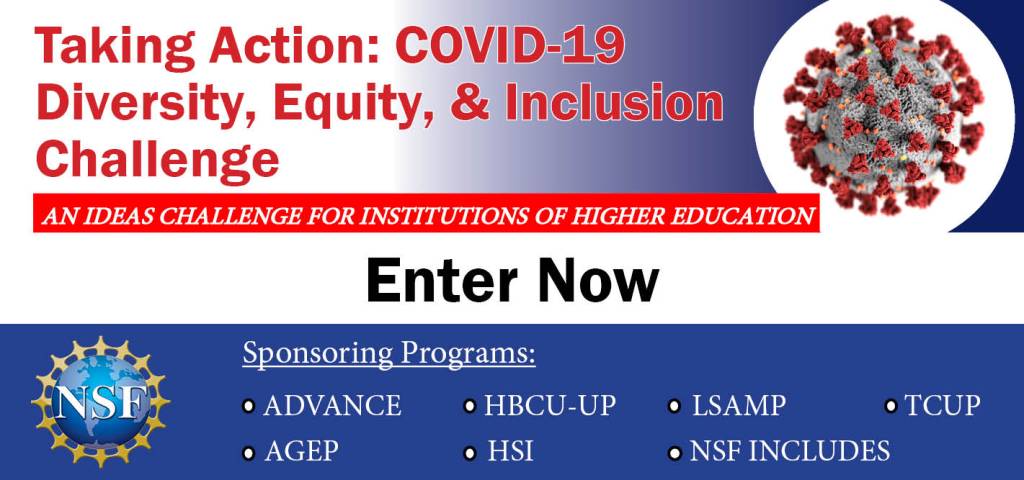NSF has announced the “Taking Action: COVID-19 Diversity, Equity, and Inclusion Challenge,” an ideas challenge for Institutions of Higher Education (IHEs). The challenge is designed to highlight the need for institutional solutions to mitigate the long-term, negative impacts of the COVID-19 pandemic on the diversity, equity, and inclusion (DEI) of undergraduate and graduate students, postdoctoral researchers, and faculty in Science, Technology, Engineering, and Mathematics (STEM).
Because the issues impacting STEM undergraduate and graduate students, postdoctoral researchers, and faculty vary, the challenge is divided into four categories:
- STEM undergraduates at community and technical colleges;
- STEM undergraduates at four-year institutions;
- STEM graduate students and postdoctoral researchers; and
- STEM faculty.
Each category will have first-, second-, and third-place cash winners and may include up to 10 honorable mention designees.
Winners will be announced in March 2022 and will be invited to present their ideas with the community at a future NSF event. All prize-winning and honorable mention submissions will be added to a repository and made available to the public.
The NSF programs sponsoring the challenge include: Alliances for Graduate Education and the Professoriate (AGEP), ADVANCE, Historically Black Colleges and Universities Undergraduate Program (HBCU-UP), Inclusion across the Nation of Communities of Learners of Underrepresented Discoverers in Engineering and Science (INCLUDES), Improving Undergraduate STEM Education: Hispanic-Serving Institutions Program (HSI), Tribal Colleges and Universities Program (TCUP), and Louis Stokes Alliances for Minority Participation (LSAMP).
Eligibility
All eligible IHEs are encouraged and invited to submit descriptions of institutional actions that have been implemented, or will be implemented, such as new and revised policies, procedures, and practices to ensure continued progress toward more diverse, equitable, and inclusive STEM higher education programs and institutions. Submissions from Minority Serving Institutions (MSIs) and community and technical colleges are particularly encouraged in all challenge categories for which they are eligible. IHEs do not need to have a grant from NSF to submit to this challenge.
More information
You can find more information and apply for this challenge on Challenge.gov.










